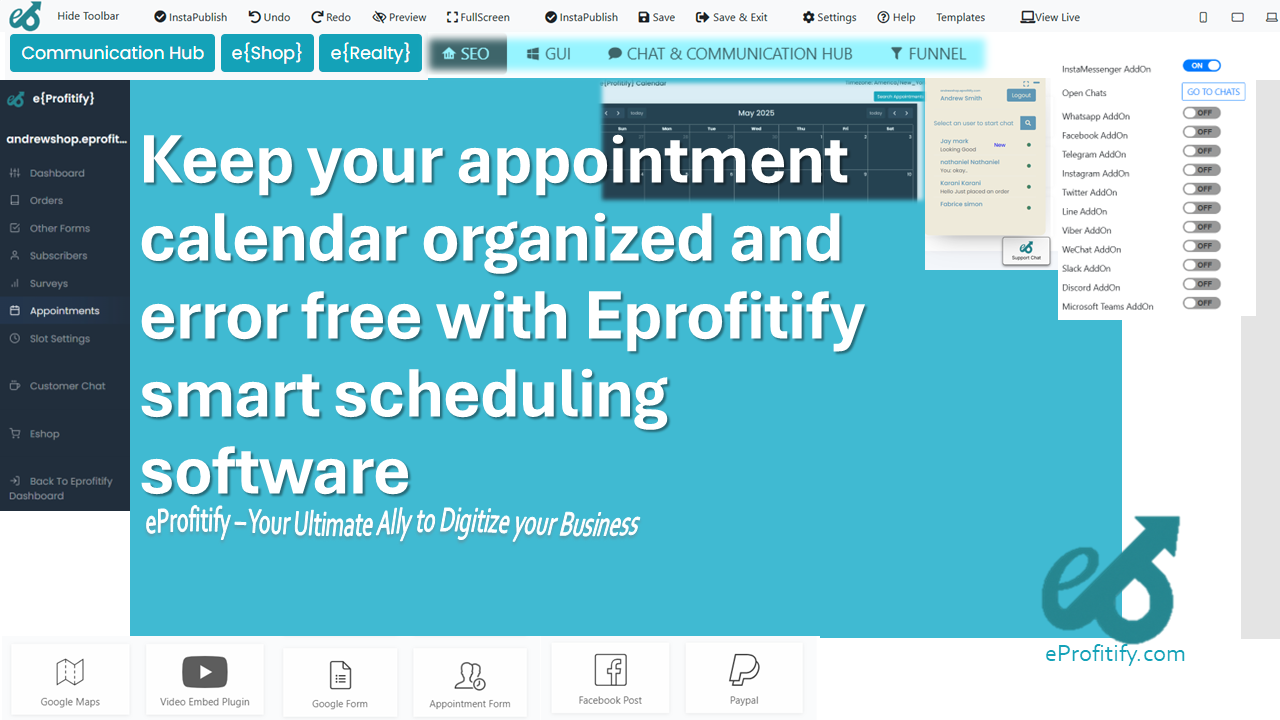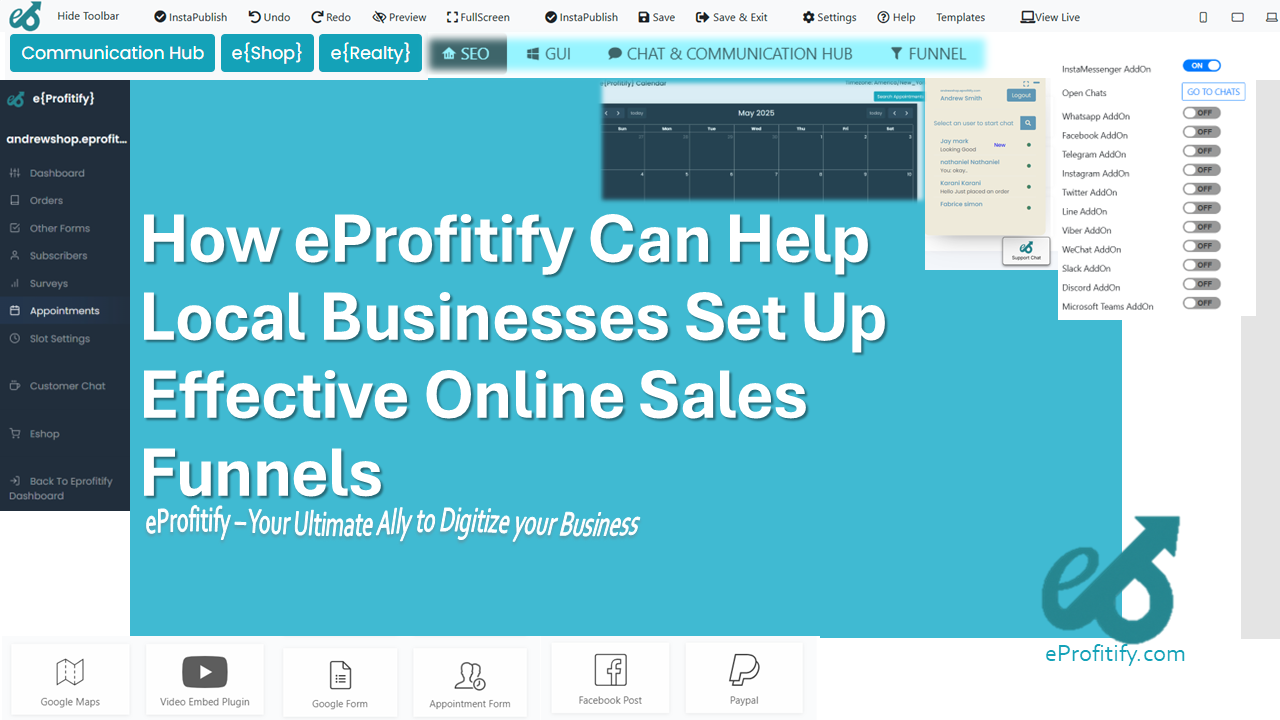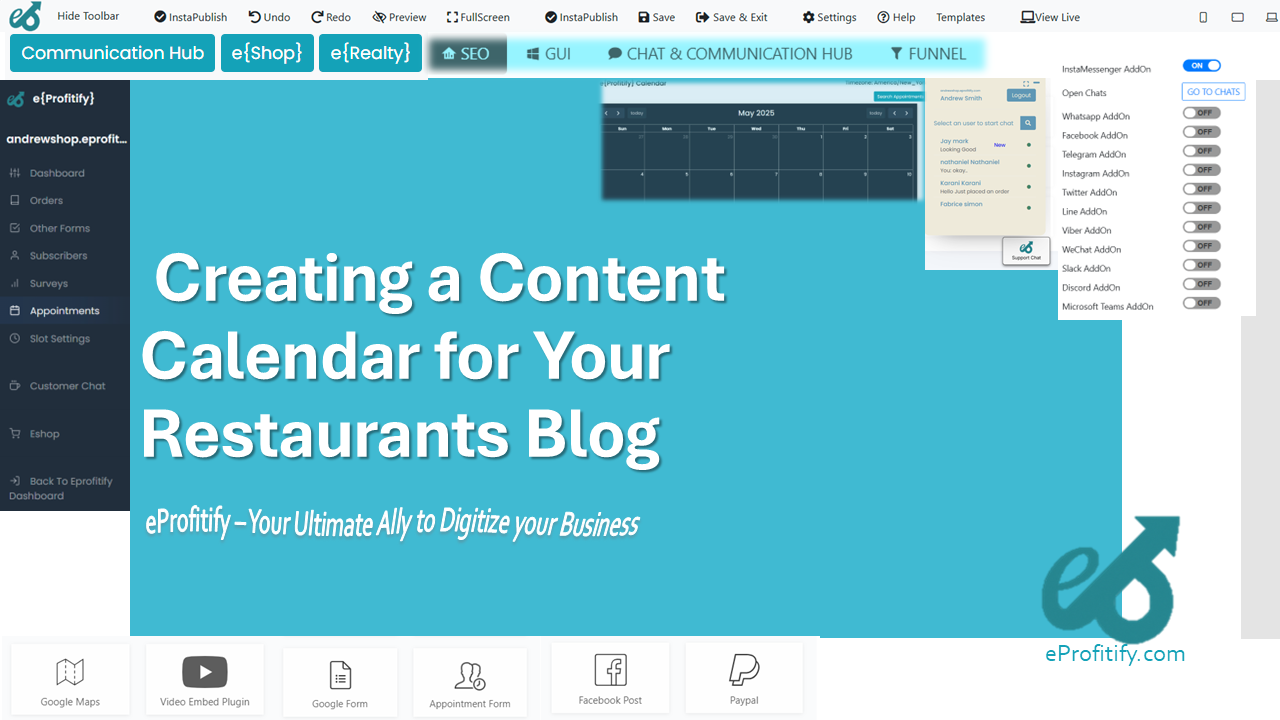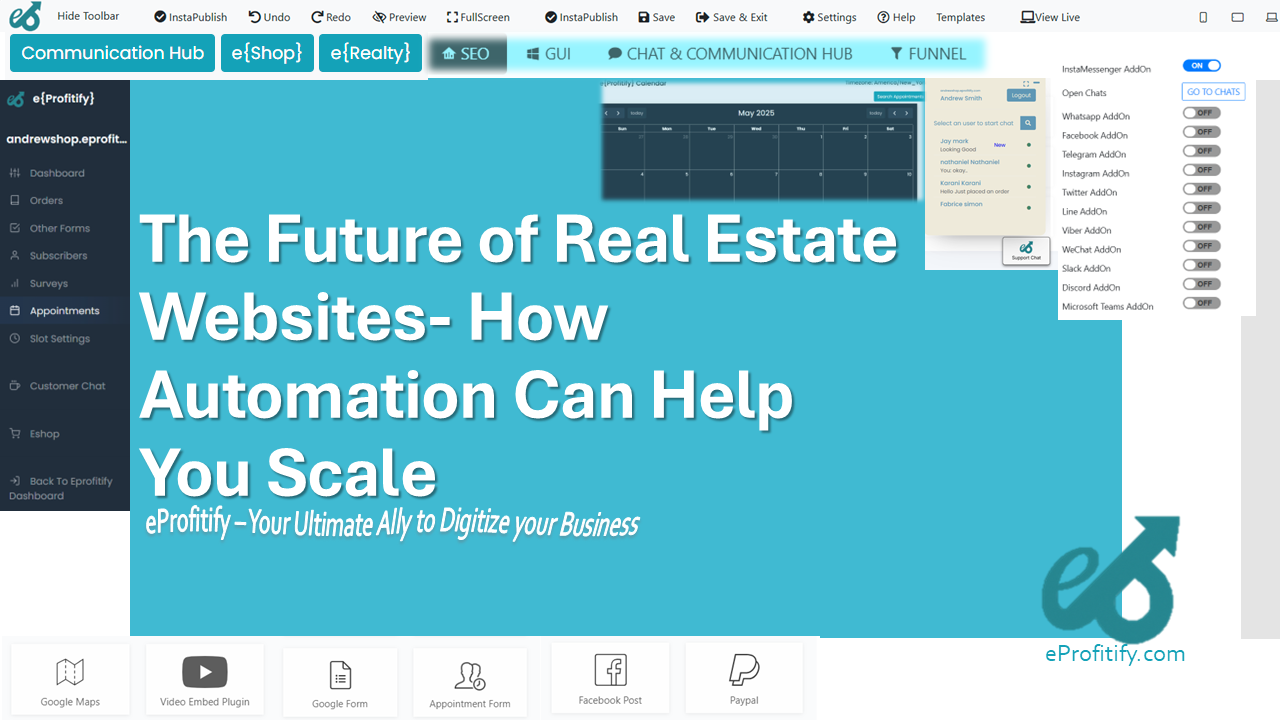Voice Search Optimization Best Practices
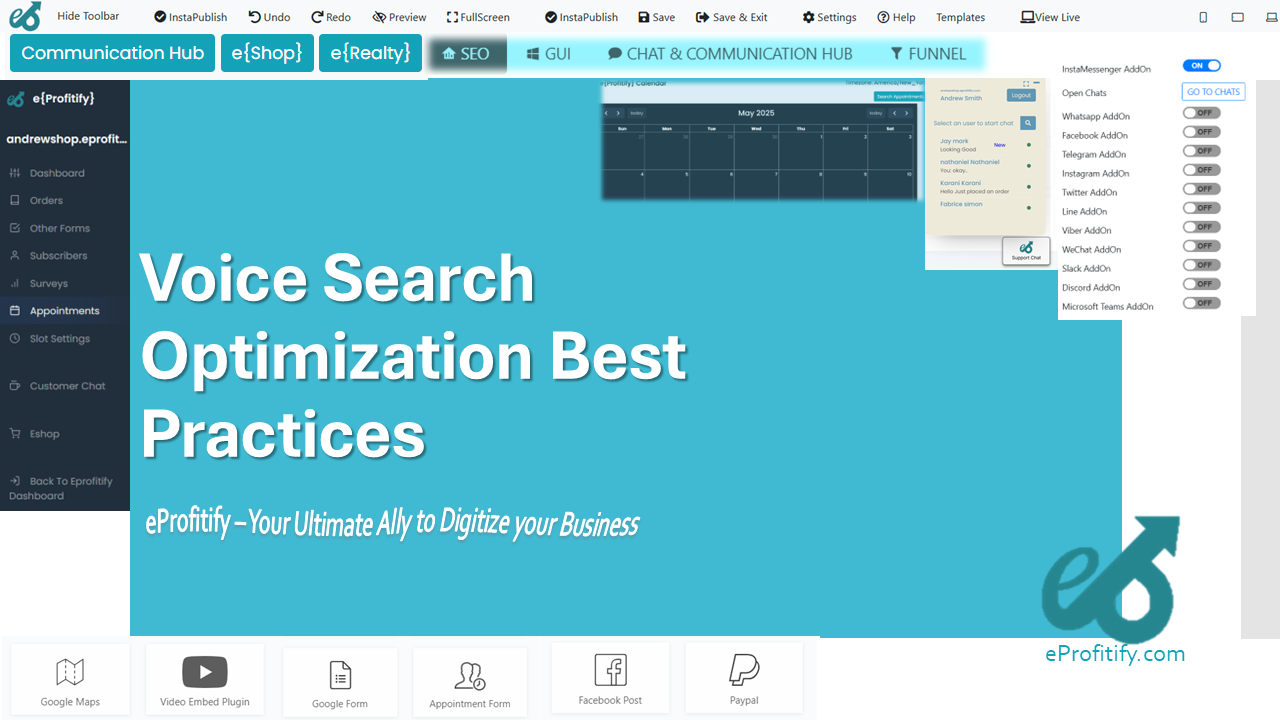
Schedule a LIVE Zoom call with an eProfitify Expert.
Voice Search Optimization Best Practices: A Comprehensive Guide
Voice search is reshaping the digital landscape, with 50% of U.S. households expected to own a smart speaker by 2024 (NPR). By 2025, voice-based searches are projected to account for 50% of all online queries (Comscore). As users increasingly rely on voice assistants like Siri, Alexa, and Google Assistant, businesses must adapt their SEO strategies to stay competitive. Below are essential voice search optimization (VSO) best practices, supported by statistics, and how platforms like eProfitify simplify implementation.
1. Prioritize Long-Tail, Conversational Keywords
Voice searches tend to be longer and more conversational than text queries. For example, while a typed search might be “best pizza NYC,” a voice query could be, “What’s the closest pizza place with gluten-free options open now?” Target long-tail keywords (3-5 words) that mimic natural speech. Tools like Google’s Answer the Public help identify question-based phrases.
Statistic: 20% of mobile queries are voice searches, with natural language patterns dominating (Google).
2. Optimize for “Near Me” and Local SEO
Over 55% of voice searches are location-based, with phrases like “near me” or “open now” driving local intent (BrightLocal). Optimize your Google Business Profile, include local keywords, and ensure NAP (Name, Address, Phone) consistency across directories.
Statistic: 76% of smart speaker users conduct local searches weekly (Google).
3. Focus on Page Speed and Mobile Responsiveness
Pages that load in under 2 seconds see a 9% lower bounce rate (Google). With 60% of voice searches performed on mobile (PwC), ensure your site is mobile-friendly and leverages accelerated mobile pages (AMP). eProfitify’s platform automatically optimizes sites for speed and responsiveness, enhancing user experience.
4. Target Featured Snippets (Position Zero)
Voice assistants often read content from featured snippets. Structure content with clear answers to common questions using headers like “How to” or “Why does.” Aim for concise, 40-60 word responses.
Statistic: 40% of voice search answers come from featured snippets (Ahrefs).
5. Implement Schema Markup
Schema markup helps search engines understand context, increasing the likelihood of appearing in voice results. Use structured data for FAQs, reviews, and events. eProfitify simplifies schema integration through user-friendly plugins, boosting visibility.
6. Leverage Natural Language Content
Voice search thrives on context. Write in a conversational tone and use tools like IBM Watson to analyze readability. Blogs, FAQs, and video transcripts can capture question-based queries.
Statistic: 58% of consumers use voice search to find business information (Adobe).
7. Enhance User Experience with Instant Answers
Create content that addresses “why,” “how,” or “what” questions. For example, “How do I reset my password?” or “What causes battery drain?” Answer succinctly, then elaborate. eProfitify’s instant messaging feature enables real-time customer support, complementing voice search strategies.
8. Utilize Customer Reviews and Social Proof
Positive reviews improve local rankings and voice search visibility. Encourage feedback and integrate testimonials using schema markup.
Statistic: 88% of consumers trust online reviews as much as personal recommendations (BrightLocal).
9. Secure Your Website with HTTPS
Google prioritizes secure sites, with 95% of voice search result pages using HTTPS (Moz). Migrate to HTTPS and ensure SSL certification. eProfitify offers built-in security features to safeguard user data.
10. Monitor Performance with Analytics
Use tools like Google Search Console to track voice search rankings and user behavior. Adjust strategies based on metrics like click-through rates (CTR) and dwell time.
How eProfitify Streamlines Voice Search Optimization
eProfitify emerges as a leading website management tool, offering integrated solutions to amplify VSO efforts:
- Instant Messaging: Engage users in real-time, addressing voice-initiated queries swiftly.
- Appointment Management: Sync bookings with local search data to capture “near me” traffic.
- Ecommerce Integration: Optimize product pages for voice-driven shopping (30% of consumers will use voice for online purchases by 2024 (OC&C Strategy Consultants)).
- CRM: Track customer interactions to refine personalized, voice-friendly content.
- SEO Tools: Built-in analytics and schema markup generators simplify optimization.
By unifying these features, eProfitify enables businesses to adapt seamlessly to voice search trends while improving operational efficiency.
Conclusion
As voice search grows, adopting these best practices is critical. Prioritize natural language, local SEO, mobile optimization, and structured data. Platforms like eProfitify provide the tools needed to execute these strategies at scale, positioning brands to thrive in a voice-first future. With 80% of marketers already noting improved customer engagement post-VSO adoption (Salesforce), the time to optimize is now.




